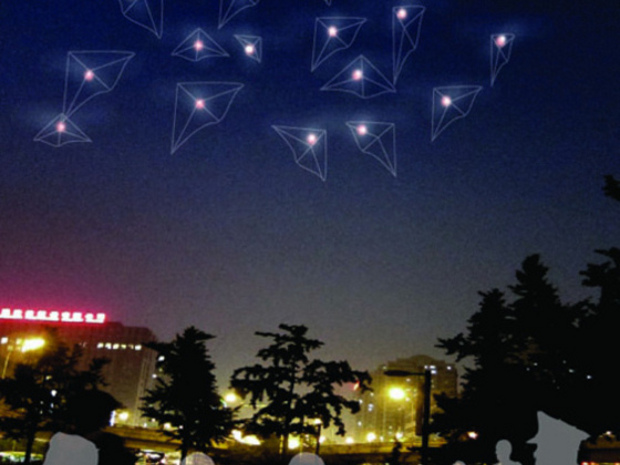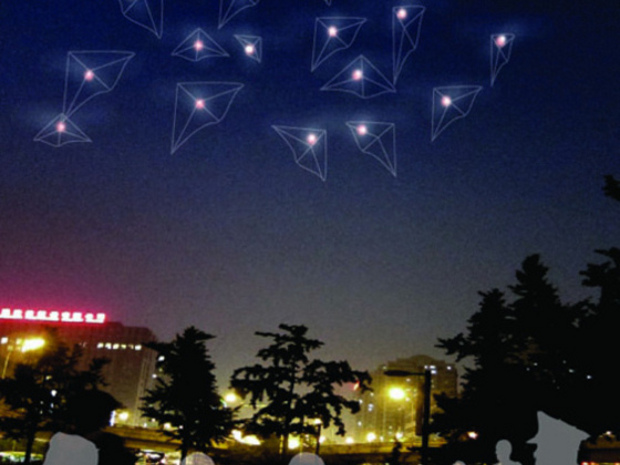Pollution Sensing Kites
A group of hacktivist artists aim to smuggle citizen science into Beijing by creating souped-up sensor kites.


Pollution is a big issue in Beijing, especially the amount of dangerous particulate matter in the air.Verifiable air-quality data is hard to come by in Beijing. To sidestep the lack of open data, a group of artists will run a series of workshops showing locals how to build an air quality sensor kite.
F-L-O-A-T Beijing will run a series of public art workshops where local attendees will be instructed how to assemble a kite housing an arduino. The arduino connects to a range of affordable (and light!) air quality sensorscapable of measuring pollutants like volatile organic compounds (VOCs), carbon monoxide, and particulate matter. Red, green and yellow LEDs dotted around the kite illuminate and flash in different patterns to denote the presence of pollution.
In the nights following the workshops the kites are flown, in a poetic gesture towards the absence of stars in Beijing nightsky: something which is also a result of the air pollution. Unlike other citizen science initiatives there is no logging of the data to a remote server, or a sensor data hub like COSM. However the artists have cleverly smuggled in citizen science under the auspices of public art. This is a wise move given the dim view local government takes on those hoping to pursue independent air quality measurement – witness the furore over the Beijing US embassy posting their own air quality readings. This subversive use of art empowers anyone interested with all the skills and knowledge necessary to build their own bespoke sensors.


